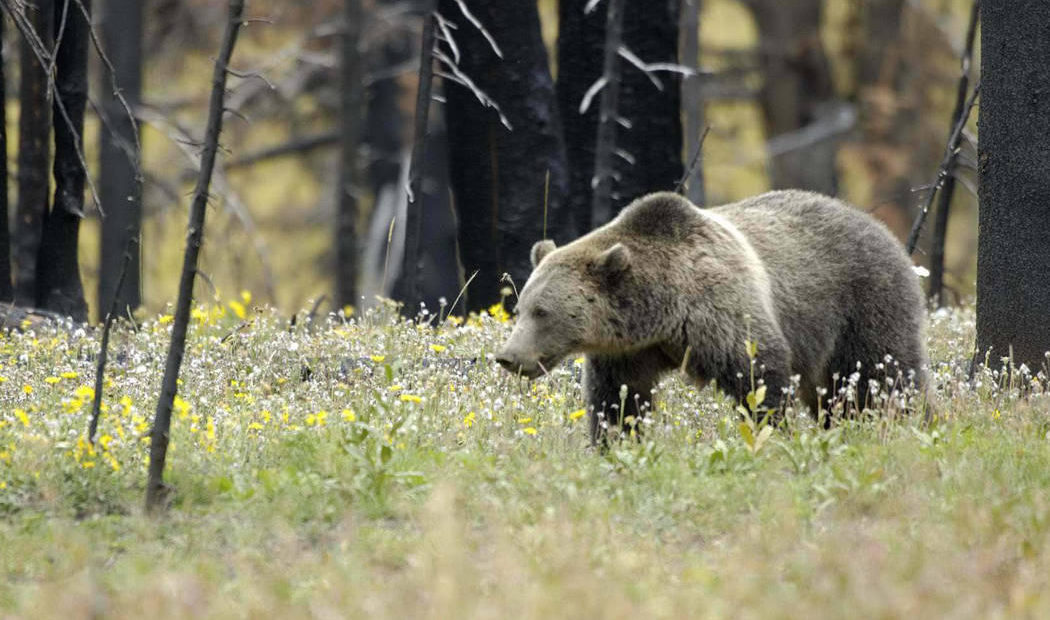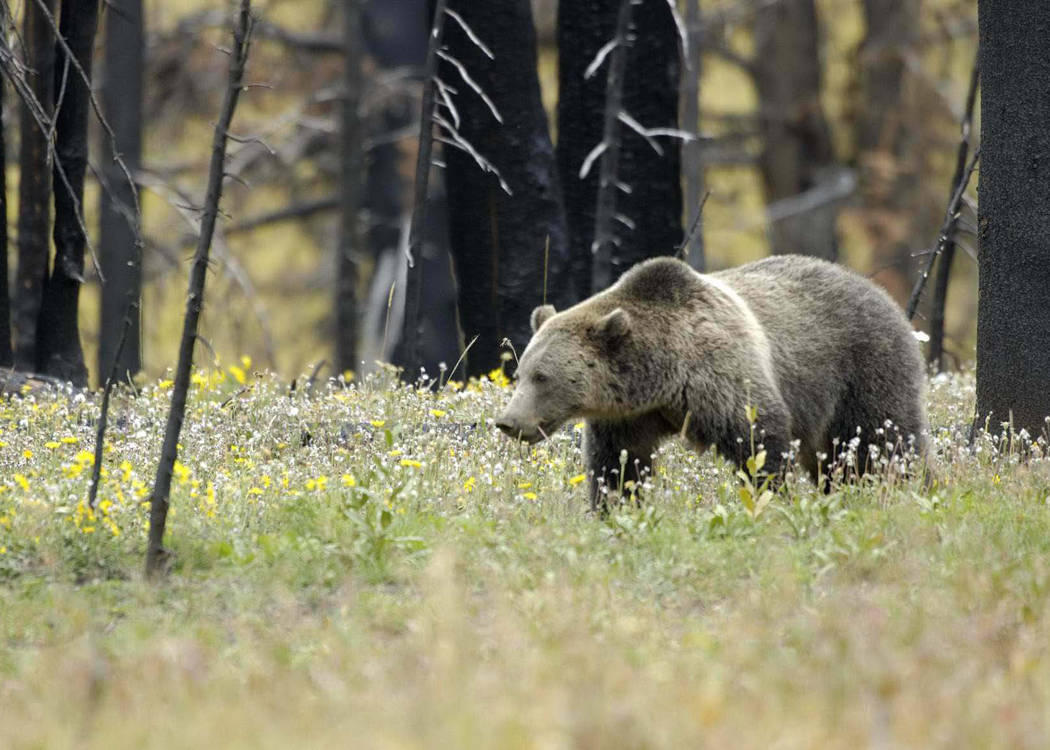
Some tribal leaders support bringing grizzly bears to the North Cascades
Listen
(Runtime 1:02)
Read
One Northwest tribe says bringing grizzlies to the North Cascades would restore harmony to areas where their ancestors lived since time immemorial.
“The Tribe’s history, culture, and identity is so intertwined with grizzly bears and the (North Cascades Ecosystem) landscape that it is impossible to separate them,” Upper Skagit Indian Tribe Chairwoman Marilyn M. Scott wrote in comments to the federal government on Nov. 3.
The U.S. Fish and Wildlife Service and the National Parks Service are considering bringing grizzlies into the North Cascades Ecosystem, which spans the U.S.-Canadian border. The on-again, off-again yearslong process has generated controversy. Some people say living near the proposed grizzly habitat could be dangerous for people and animals.
“The grizzlies are going to come to the orchards and they’re going to maul our workers. Everyone will be in danger,” said Okanogan County resident Sandy Freese at a community meeting in Omak Oct. 23. Her family owns apple and pear orchards.
However, Upper Skagit Indian Tribe elder and policy representative Scott Schuyler said the Tribe’s ancestors coexisted with grizzlies. He said about 100 years ago overdevelopment and overhunting wiped out the population in what are now known as the North Cascades.
The Upper Skagit Indian Tribe is documented as living in the North Cascades National Park throughout its history, Schuyler said.
“Our ancestors learned to coexist as they did with all the other creatures in the environment. The natural order of things being broken is really in recent history,” he said.
According to Chairwoman Scott’s letter, 80 years ago, tribal elders told anthropologist June Collins about “traditional ecological knowledge of bears as expressed in its legends.”
According to the letter, “Based on the bear encounters and stories told to her, Collins emphasized that ‘These folktales point to the close relations that the Upper Skagit [People] saw between human beings and bears, although they did not encourage the intimacy, which they regarded as potentially dangerous.’”
That highlights how traditional knowledge taught people to coexist with bears, Scott said.
The federal agencies have proposed several options for bringing grizzlies into the North Cascades Ecosystem, which is cut off from other grizzly habitats. One option would be to do nothing, in which case biologists say the bears will cease to exist in the area without any help.
The federal agencies’ preferred option would be to bring in three to seven bears per year, for five to 10 years. Using what is known as a 10(j) rule, the agencies would designate grizzlies in the area as an experimental population. That would also mean more options to deal with any bears that cause conflicts.
The federal government is accepting written comments through 11:59 p.m. Mountain Time, Nov. 13.
Maps designating different “zones” would offer more flexible options as bears moved farther from where they would be transported, federal officials have said. Those options could include deterrence, relocation or removal of bears involved in conflicts, according to federal officials.
According to Scott’s letter, her tribe is the most culturally affiliated with the area that would be most affected, known as Zone 1 of the 10(j) rule, where grizzlies would be brought in.
“The Tribe’s ancestral villages and camps extended along the length of the Skagit River and all its tributaries, where Upper Skagits hunted grizzly bear,” Scott wrote in the letter.
It’s not political, Schuyler said. Instead, it’s the tribe’s duty to be stewards of the landscape and its creatures, as his ancestors did. Grizzly bears, he said, need to be around for future generations.
“We’re interconnected to the environment. We’re interconnected to all the creatures and landscapes, and as part of the landscape, we have an inherent duty to maintain the environment and the natural order of things,” Schuyler said.
While Schuyler said he understands concerns, like those from recreationalists, he said bears and people can be protected at the same time.
“I’ll continue to travel in these areas as long as my legs will carry me,” he said.
















